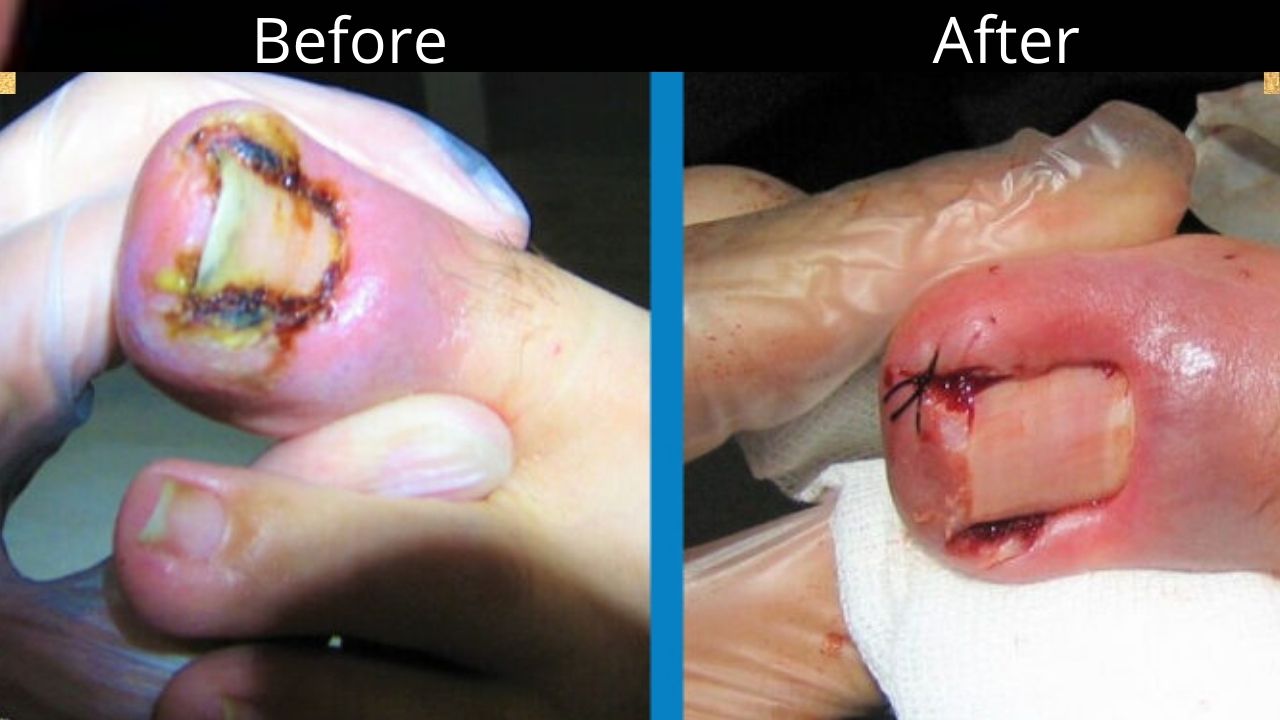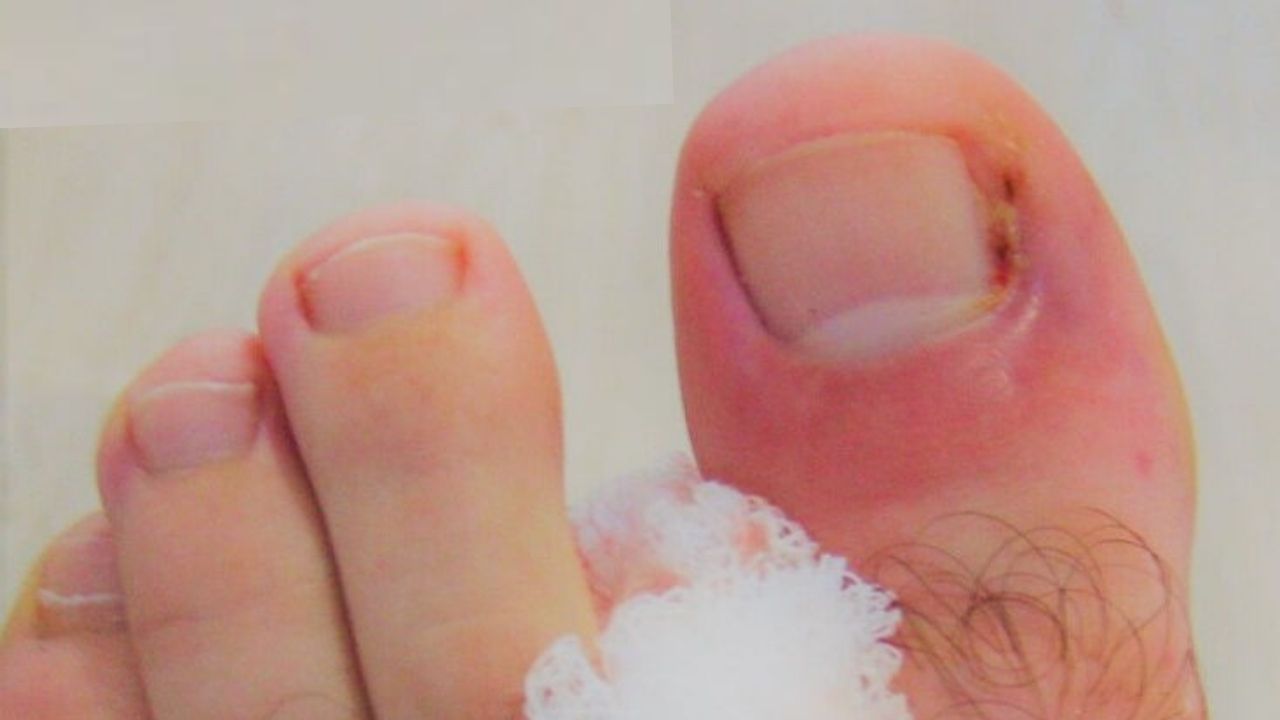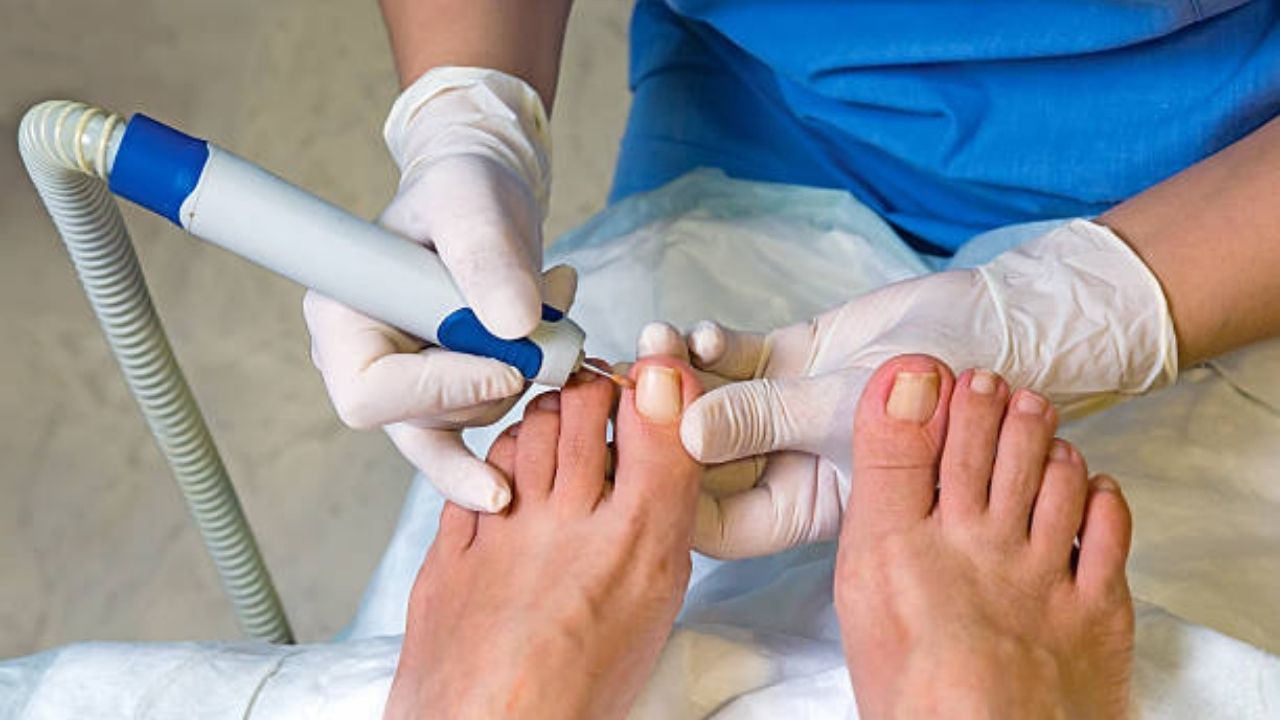A pathology that we usually see in consultation is onychocryptosis, colloquially called: ingrown nail, buried nail, among many other terms. Read more about ingrown toenail surgery and more here.
What is onychocryptosis or “ingrown toenail”?
Onychocryptosis or ingrown toenail is a pathology of the foot that occurs when the excessive growth of the nail (usually of the big toe), penetrates through the lateral skin, producing abundant pain.
The problem arises little by little, penetrating the skin more and more until the nail penetrates the skin.
Once the nail breaks the skin, it creates a sore where it continues to grow, penetrating and causing pain.
That’s not all, the foot is an acral area, where there are many microorganisms and the fact of having an open wound, makes it very easy to get infected.
When the nail is infected, not only does it hurt much more, it also makes the intervention difficult for the specialist and can lead to future problems. That is why it is very important to go to a professional in time to solve the problem.
How do ingrown toenails originate?
Ingrown toenails have many origins, from trauma, tight shoes, a sports experience that we are not used to, a deformity of a finger, our way of stepping.
What to do if I have an ingrown toenail?
When the origin of the problem is punctual, and it is not very advanced, it is usually enough to remove the spike from the nail (the part that is under the skin) and treat for a few days to leave the problem behind.
It is important in these mild cases to identify the cause and avoid it, for example, if it was due to too soft or narrow footwear, do not use it again.
Other times the lesion becomes chronic, that is, it appears recurrently, this is not only a torment for the patient, but the structures adjacent to the nail change, the continuous infections cause the shape of the rim to change, the skin is of a different color and that with the minimum pressure the nail can be inserted back into the meat.
Ingrown toenail surgery: partial matricectomy
When the injury is chronic, the best option is to do a small surgical intervention: a partial matricectomy.
This operation definitively eliminates the problem, making the nail narrower and thus not ingrown.
What does the ingrown toenail operation consist of?

The blue line represents the nail matrix, the black line up to where we want to section the nail and the green dot the section of matrix that we will eliminate.
The matrix of the nail is the area from where it grows, it is burned so that the side of the nail does not grow back and therefore it never penetrates through the lateral skin.
The ingrown toenail operation
When we have chronic onychocryptosis, we should consider operating it for comfort and to avoid future problems.
The most common operation is performed with the phenol-alcohol technique: once the finger is anesthetized, it consists of cutting the nail as we usually do to resolve less advanced onychocryptosis, although this time being more generous with the excised area.
Once the part of the nail that we do not want to grow back has been removed, we must do a curettage of the nail matrix (structure adjacent to the distal phalanx that is responsible for nail growth).
After this curettage, thanks to the properties of phenol (a very powerful acid that is inactivated with alcohol), we burn the bone area where we perform the curettage and inactivate the acid with alcohol.
These last two paragraphs mean that we will intervene in the lateral area of the nail, preventing it from growing in that area again, preventing the problem from returning.
How is the postoperative period of an ingrown toenail surgery?
The postoperative period is minimal, and although it varies depending on the person, usually, after a few days there are no longer any discomforts derived from the operation.
We can say that in general, in less than a week you can already be walking normally.
In any case, for a reasonable time (up to a month), it is recommended not to do active use, such as intensive sports, or swimming.
Ingrown toenail operation: before and after

It is a pity that we could not take a photo of the operation that can be seen in the image two weeks later, since once the inflammation had subsided and the stitches were removed, the appearance of the nail was very good.
Photograph of mild ingrown toenail before the operation:

Below is the photo of a nail with onychocryptosis or ingrown toenail before surgery.
Moderate ingrown toenail photography after operation:

Below we can see the same foot just after the operation, in which the lateral area of the nail has been removed. In this case he did not need points because the progress was moderate.
